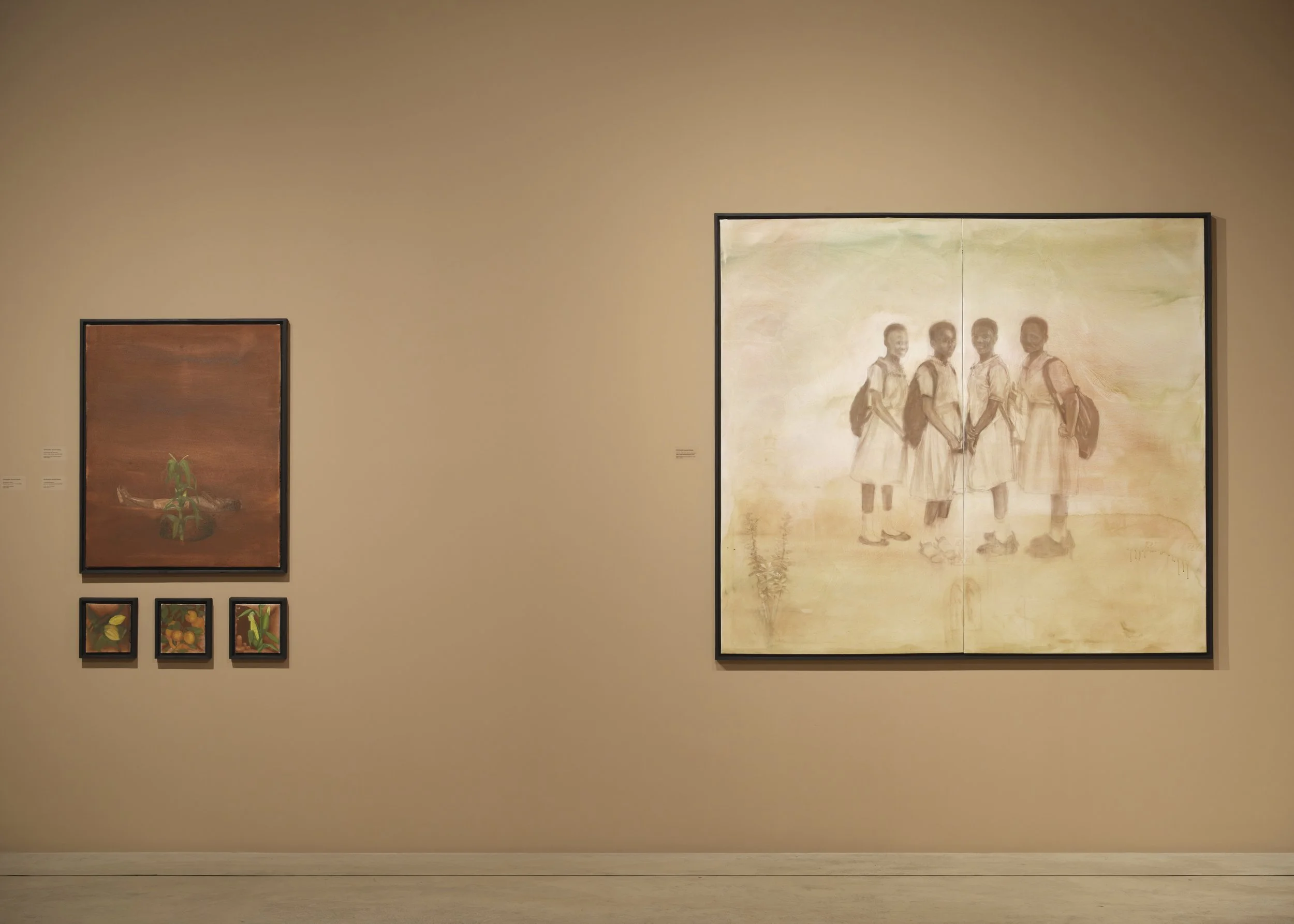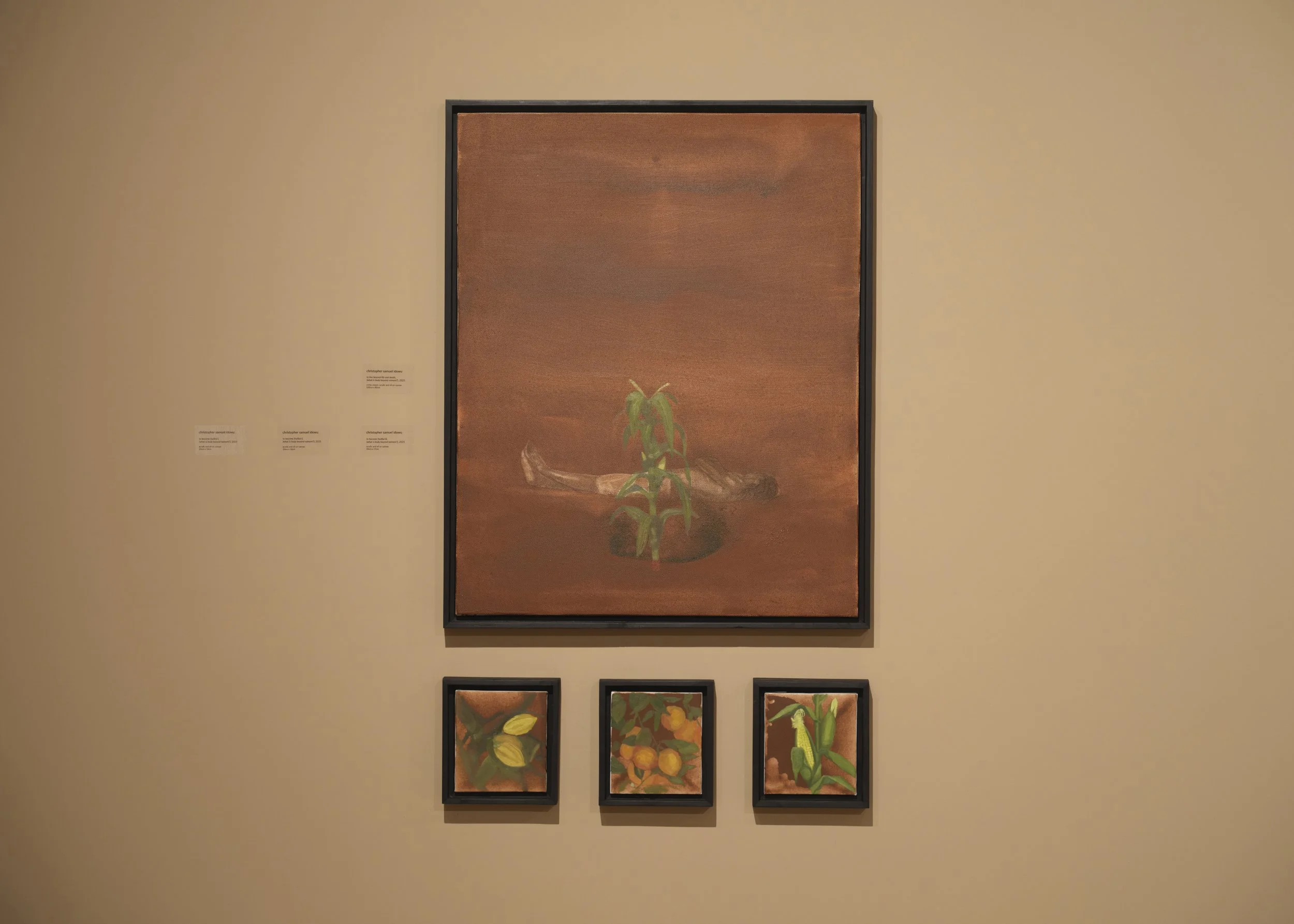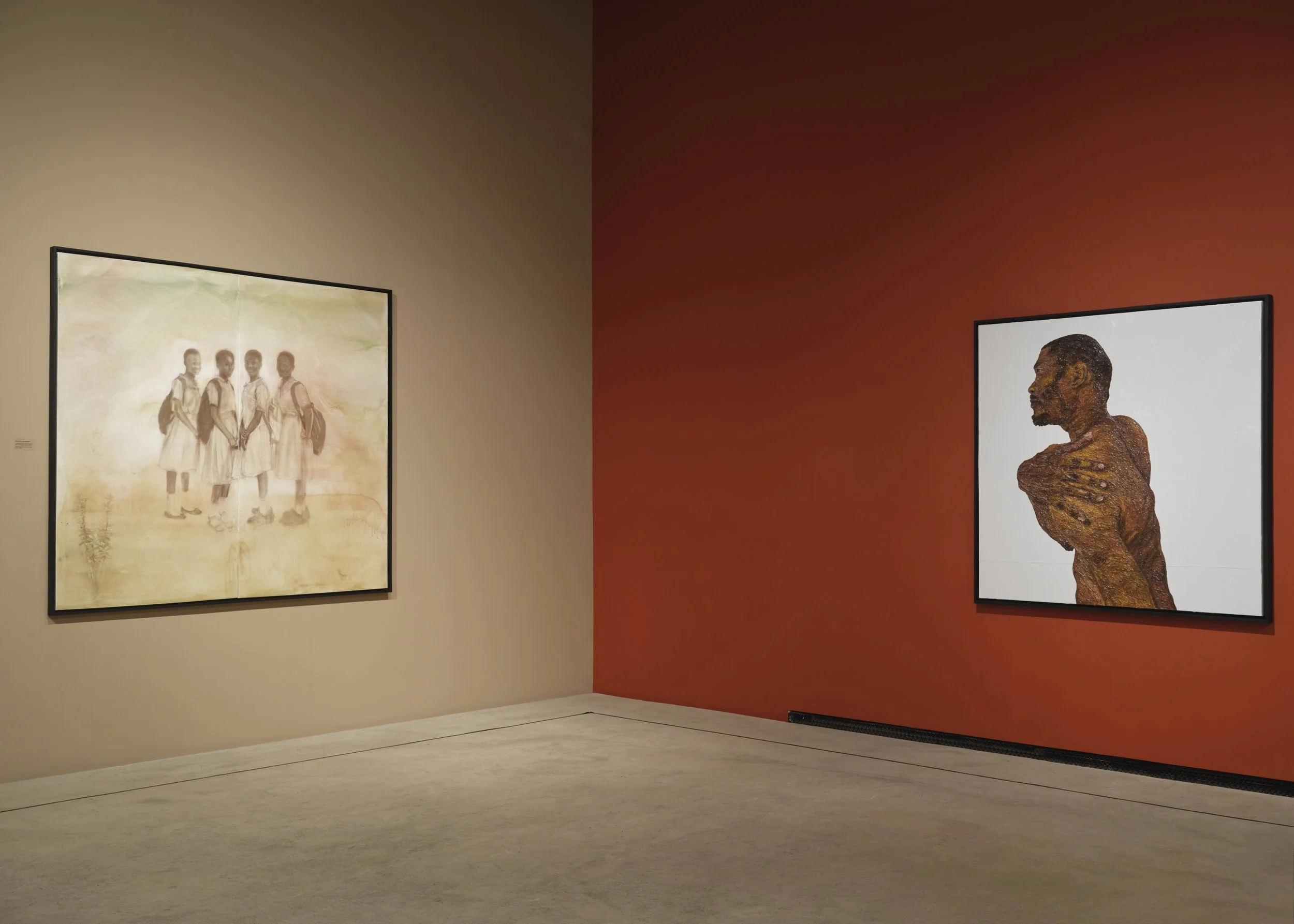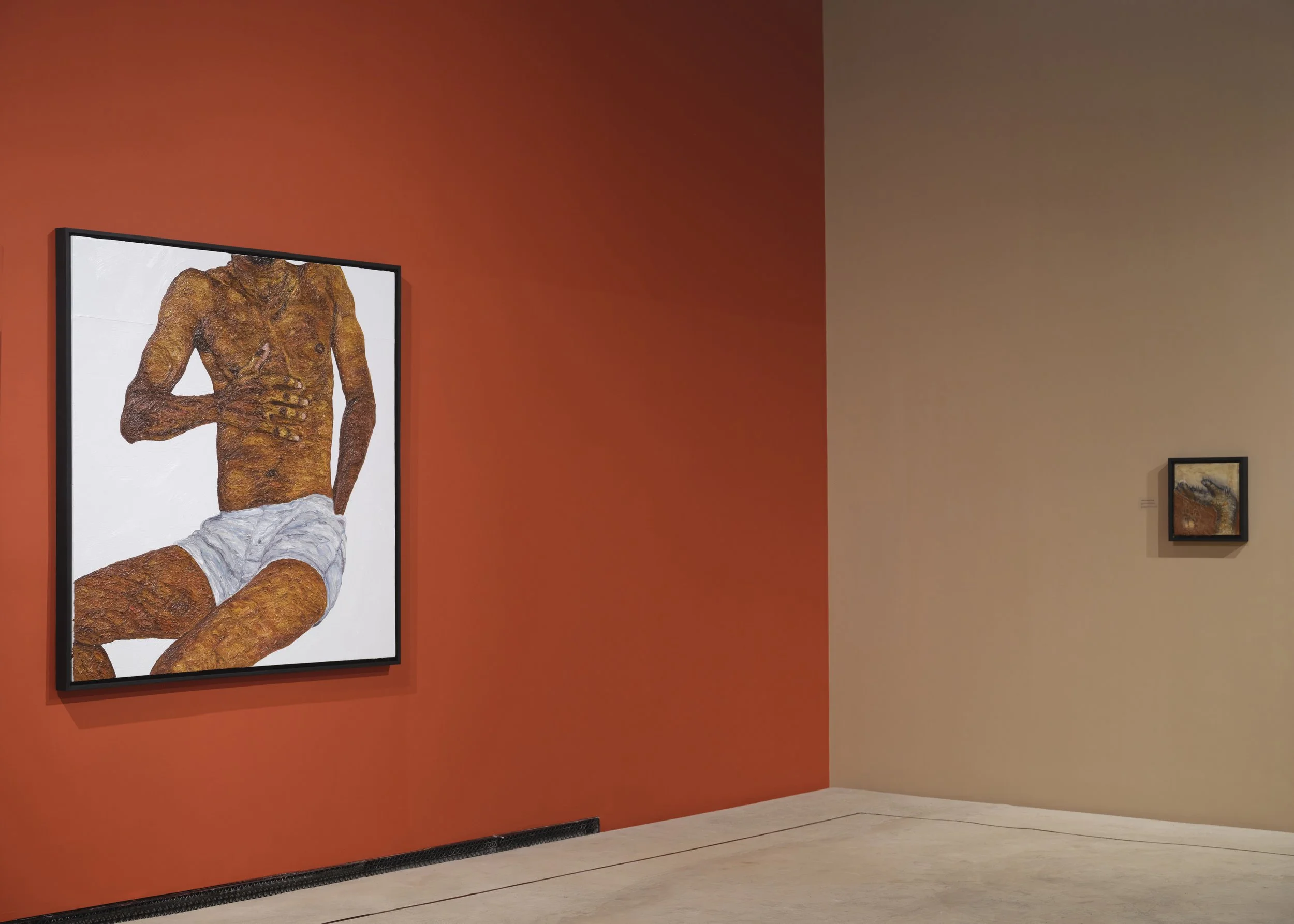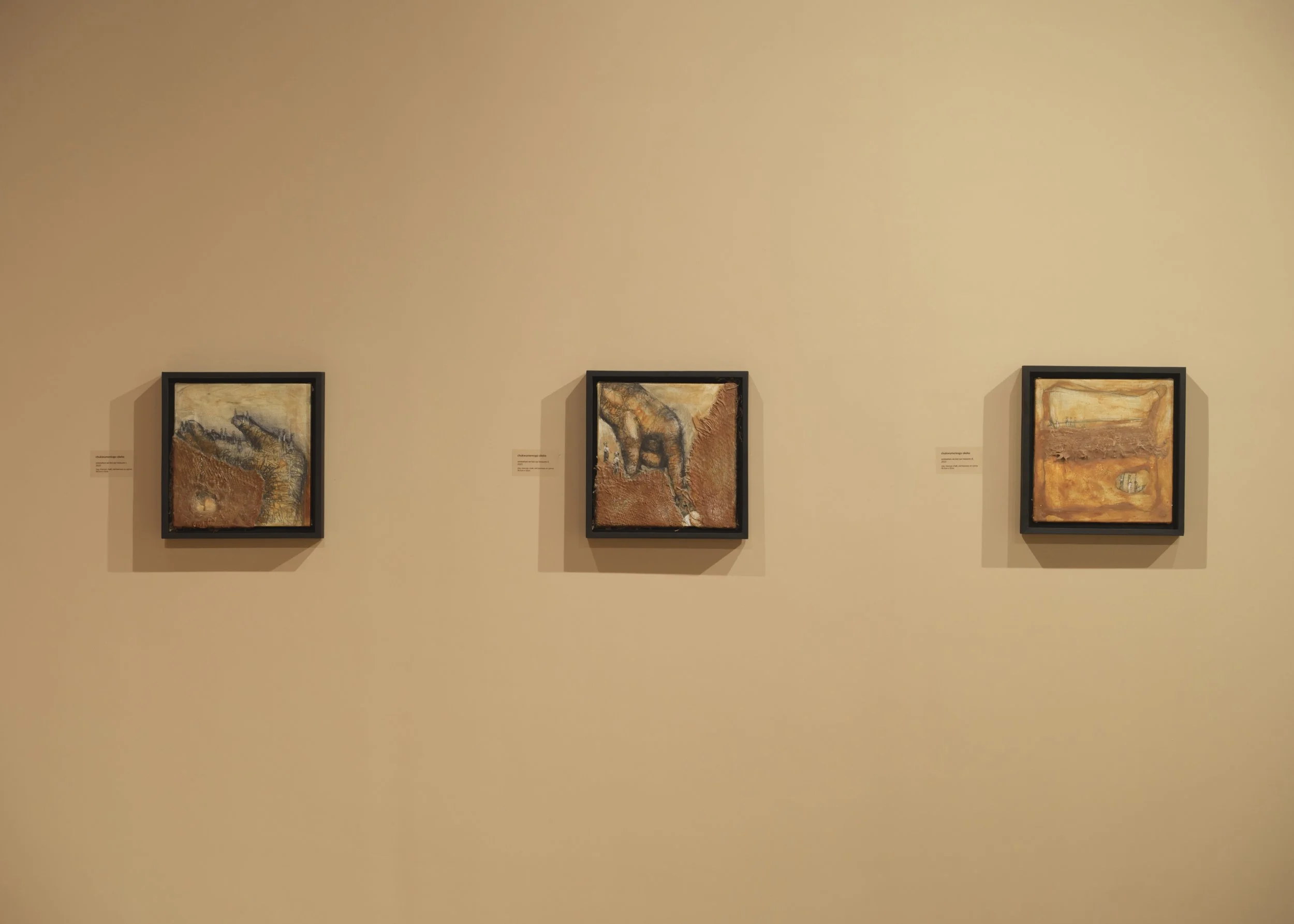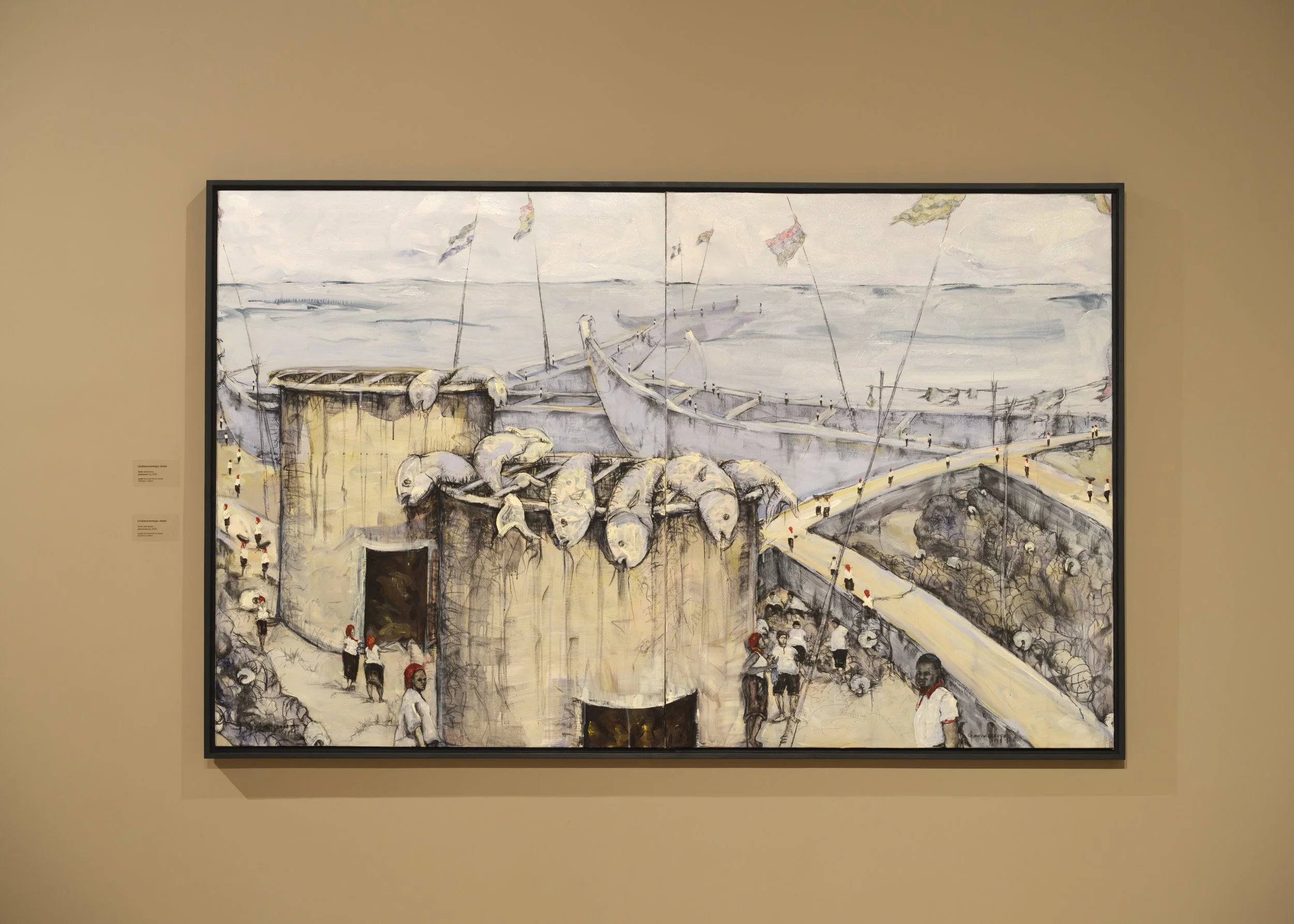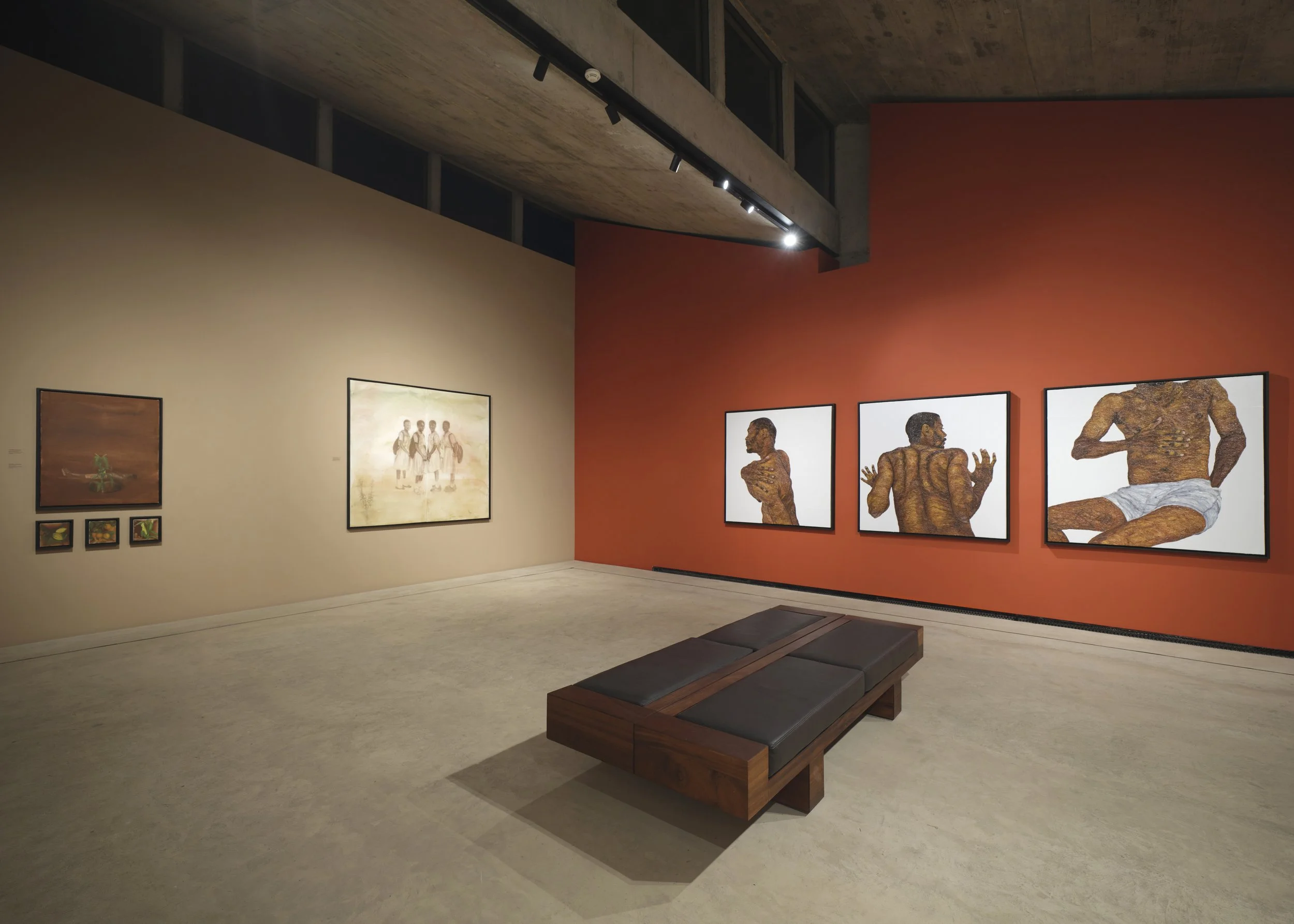some things just don’t wash off
july 3 to august 30 2025
some things—whether carried in the body, the land, or the materials we touch—just don’t wash off. exploring material as memory, surface as story, and the body as a vessel for emotion, history, and transformation. in this exhibition each artist brings a deeply embodied approach to their process – using materials, both primary and experimental, as tools for excavating what lingers. across their practices, materials carry with them the textures of place, labour, and selfhood.
all three artists engage with multiple aspects of presence and reflection. christopher samuel idowu turns to the spiritual, exploring the body as a site of transcendence and memory. nobel koty looks inward, mapping emotional states through intimate self-portraiture. chukwumereogo okeke looks outward, observing the gendered experience within geographic and sociopolitical contexts. though distinct in approach, each artist grounds their inquiry in material, offering abstract yet embodied expressions of what endures—some things, after all, just don’t wash off.
idowu's works are layered excavations, composed of silkscreen, pigment, and photographic traces. in to live beyond life and death (what is body beyond raiment?), a lone figure lies in tranquility, surrounded by a deep, earthen field. a single stalk of green maize grows from the foreground, rooted in soil, reaching upward. it is a quiet, powerful invocation of life cycles: death, memory, regeneration. exploring the collective in nsoroma: to become children of heavens (what is body beyond raiment?), idowu offers a meditation on togetherness through the eyes of four youths standing hand in hand. in his triptych to become fruitful (what is body beyond raiment?) I–III, idowu contemplates cycles of growth, regeneration, and spiritual nourishment. rendered in warm earth tones, the paintings depict maize and fruit,
symbols of sustenance, rootedness, and harvest. through these elemental forms, idowu expands his inquiry into the body beyond surface, exploring what lies beneath, and what is cultivated over time. the repeated motif of fruit connects the sacred and the everyday, suggesting that becoming—like ripening—is a process shaped by environment, memory, and faith. koty is interested in expressing acts of emotional grounding that trace fragility, calm, and resilience. in rest I–III, self-portraiture becomes a study in stillness, reflection, and the emotional weight of embodiment. across the triptych, thick acrylic paint is layered onto canvas like skin, textured and marked by time. in rest III, the artist omits his face entirely, centring the torso in a gentle pose with one hand placed across the chest. this framing draws attention to gesture and physicality, allowing the viewer to consider the body not as portrait but as presence—calm, vulnerable, and grounding. in rest I and rest II, koty returns to facial likeness. yet, despite this visibility, emotion is communicated more through posture than expression. his figures lie in repose—one cradling the self inward, another pressing lightly against an unseen surface, perhaps a bed or the canvas itself. these subtle gestures evoke moments of tenderness, reminding us that the body, like canvas, absorbs and reflects everything it encounters.
chukwumereogo okeke pushes the boundaries of surface and substance in her mixed media works. experimenting with encaustic painting during her residency to create somewhere we lost our treasures I–III, she layers beeswax, jute sacks, and charcoal—materials rooted in trade and domesticity—transforming them into tactile sites of memory. her figures emerge from these surfaces, as though imprinted by time and textured histories. these richly layered compositions assert that memory can be felt—that some experiences remain etched into material. alongside this series, boats and stoves, jamestown I & II offers a more observational perspective, yet remains deeply rooted in the themes that define her practice. based on her time spent in jamestown—a historic fishing community in accra—the diptych documents scenes of everyday labour: women gathered around open stoves, men working in their boats, fish piled on metal drums, red headscarves punctuating the pale urban wash. with sketch-like mark-making and a softened palette, chukwumereogo captures the entanglements of survival and environment. together, these works offer a layered reflection on gendered labour and communal life. each canvas becomes a site of both personal and collective memory.
Through these works the artists invite viewers to consider how materials move—across regions, bodies, and histories—and how, through artistic practice, they are reshaped into new geographies of meaning. together, these practices form connections—between artists and materials, bodies and earth, memory and surface.
installation view



